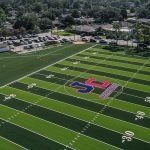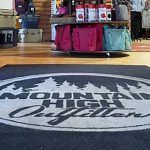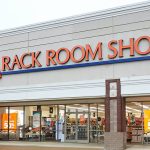Canada Goose Inc. reported sales in its fiscal fourth-quarter ended March 28 rose 33.7 percent and easily exceeded Wall Street estimates.
Sales reached $208.8 million compared to Wall Street’s consensus estimate of $159 million. Earnings reached $2.9 million, or 3 cents a share. Excluding non-recurring items, adjusted earnings per share came in at 1 cent, compared with Wall Street’s consensus estimate calling for a loss of 12 cents.
Figures are in Canadian dollars.
“Canada Goose has shifted from recovery to growth beyond pre-pandemic levels,” said Dani Reiss, president and CEO. “We achieved our largest ever fourth quarter by revenue. With triple-digit e-commerce growth and a resilient retail performance despite disruptions, we served our global consumer base through agile and flexible DTC distribution. Our new Cypress and Crofton collection, as well as the NBA All-Star collaboration, also showcase our ability to relentlessly drive brand heat. Recognizing pandemic uncertainties remain, we are highly confident in our potential for meaningful growth as we move into fiscal 2022.”
Fourth Quarter Fiscal 2021 Business Highlights
compared to Fourth Quarter Fiscal 2020
- Total revenue increased by 33.7 percent relative to the comparative quarter in Fiscal 2019 which was prior to the onset of COVID-19;
- Global e-Commerce revenue increased by 123.2 percent, driven by high double-digit and low triple-digit growth rates in all major existing markets;
- Revenue increased significantly in all geographic regions except Canada, which only decreased by 6.9 percent despite elevated mandatory retail closures relative to other markets;
- DTC revenue in Mainland China, which was heavily impacted by COVID-19 disruptions in the comparative quarter, increased by 101.4 percent;
- Fourth Quarter Fiscal 2021 Results, compared to the Fourth Quarter Fiscal 2020;
- Total revenue was $208.8 million from $140.9 million;
- DTC revenue was $172.2 million from $114.2 million driven by e-Commerce growth and continued retail expansion in Mainland China, offset by lower store revenue in other markets due to COVID-19 disruptions;
- Wholesale revenue was $33.3 million from $25.0 million. The increase was due to the higher in-season orders relative to the comparative period;
- Other revenue was $3.3 million from $1.7 million;
- Gross profit was $138.6 million, a gross margin of 66.4 percent, compared to $93.6m and 66.4 percent. Gross margin was flat with gains from a higher proportion of DTC revenue offset by margin declines in the DTC and Wholesale segments. This includes a $4.1m increase in provisions for raw materials and finished goods for certain colors on the basis of Fall/Winter sales velocity;
- DTC gross margin of 74.9 percent, compared to 75.5 percent. The decrease was driven by a $2.4 million increase in inventory provisions (-140 bps), offset by the favorable impact of pricing and volume (+90 bps) driven by parkas.
- Wholesale gross margin of 29.1 percent, compared to 34.8 percent. The decrease was attributable to a $1.7 million increase in inventory provisions (-530 bps) in a period with seasonally lower revenue;
- Other segment gross loss was $0.1 million from $1.3 million;
- Operating income was $7.8 million, an operating margin of 3.7 percent, compared to an operating loss of $(17.2)m and an operating margin of (12.2) percent;
- DTC operating margin of 44.4 percent, compared to 38.2 percent. The increase was driven by the positive impact of e-commerce growth, which had higher operating profitability than retail stores. This was partially offset by the impact of retail expansion and operating disruptions as a result of COVID-19;
- Wholesale operating margin of (11.7) percent, compared to (22.0) percent. The increase was attributable to cost reduction initiatives in response to COVID-19, partially offset by a lower gross margin;
- Other operating loss was $64.7 million from $55.3 million. The increase was attributable to $10.2 million of higher performance-based compensation, $6.8 million of incremental marketing costs, and $2.2 million of product development costs. This was partially offset by $10.1 million of favorable foreign exchange fluctuations related to working capital and the Term Loan Facility, net of hedge impacts;
- Net income was $2.9 million, or 3 cents per diluted share, compared to $2.5 million, or 2 cents per diluted share.
- Non-IFRS adjusted EBIT was $5.4 million, an adjusted EBIT margin of 2.6 percent, compared to $(9.7) million and (6.9) percent;
- Non-IFRS adjusted net income was $1.1 million, or 1 cent per diluted share, compared to $(13.3) million, or $(0.12) per diluted share;
- Cash was $477.9 million as of year-end, compared to $31.7 million, alongside $181.2 million of available borrowing capacity in the undrawn revolving facility. The increase was driven by positive free operating cash flow and refinancing proceeds; and
- Inventory was $342.3 million as of year-end, compared to $412.3 million. The decrease was attributable to a planned drawdown in finished goods of $71.5 million, supported by a strong Fall / Winter sales performance and reduced production levels during fiscal 2021.
Outlook
Based on existing economic and operating conditions, the percent currently expects total revenue to exceed $1Bn in fiscal 2022. This is based on the following assumptions:
- Annual DTC revenue approaching 70 percent of total revenue, with continued distribution expansion in line with historical levels;
- Annual Wholesale revenue in line with fiscal 2021; and
- Total revenue in Q1 fiscal 2022 is assumed to be less than double the $26.1 million of total revenue from Q1 fiscal 2021.
As of the date of this release, 6 of 28 Canada Goose retail stores, representing 21 percent of the network, are closed.
Photo courtesy Canada Goose
















